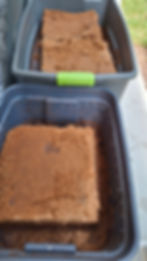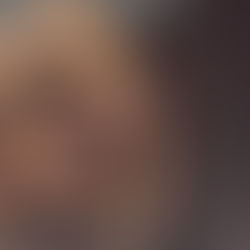Purple Flags
With an eye toward expanding our vegetable and pollinator-friendly flower gardens in the spring, we must plant this fall. So, on this cool (for August), beautiful morning I ventured out, walking the property with purple flags and the master plan in hand. Over a hundred flags now stake out the spaces that will (hopefully) be filled with new living things next spring.

Front yard, walkway to porch

Imagine it full of peonies, Asiatic lilies, daffodils, forget-me-nots, irises...

Back yard, path along open acreage to bee hives and forested area

Lupines on the outside, lavender, echinacea, black-eyed susans,
and plenty of room for happy chickens!
It felt good to plant those flags in our terribly rocky and dry soil, knowing that we have a lot of work ahead of us, tilling, adding vermicompost, topsoil, and lots of time!
Speaking of tilling, we got our tiller up and running, only to confirm what we already know, our land is not a plant-friendly place...yet! I have said this before, but it is a good reminder to my heart, everything we do here is a little deposit into our someday dream homestead. There is no quick and easy way to make this happen, just lots and lots of little steps.

Falu Red
Did you know that the color red that you may associate with Scandinavian cottages and barns is called falu red?
From the Smithsonian Magazine article, "Why are all Swedish cottages painted red?" from September 25, 2020. Read the full article HERE.
The source of the color is its namesake. Falu red comes from the Falun copper mine in central Sweden, which dates back to the 9th century. Today the mine is a museum and UNESCO World Heritage site, but at one point in history, it was the largest copper mine in Europe and the economic anchor of the Swedish kingdom.
Having our own Little Red Swedish Stuga (cottage) has always been a cherished idea for us, so it was only fitting to paint the structures that Peter is constructing in falu red as a nod to our Scandinavian roots.

"The Cottage," painting by Carl Larsson, 1895, Sweden

Peter painted the tool shed falu red

Still a work in progress with some door leveling to be done next weekend.
Signs of Life
Our gardens-of-benign-neglect are continuing to surprise us and produce yummy fresh things for us to eat. We enjoyed the lettuce and baby French radishes this weekend and it looks like we will continue to have those for a few more weeks.


The herb/tea garden is also showing signs of life. Peter's watering system is working well to keep a consistent daily watering schedule for our little plants to have a good start!

Lemon balm

Chamomile

Dill

Oregano
Worm Math
While tending to the Gerards today, I once again noticed the abundance of babies in the bins. I pondered if there was a way to determine the number of worms in our 6 bins. To my surprise, I discovered an online tool called the "Red Wiggler Reproduction Calculator." By inputting 2250 as the initial number and factoring in a 5% death/loss rate per week over the course of 90 days, it appears that we now have over 16,000 adult worms and more than 50,000 wormlings! It's time to prepare additional bins and construct that worm shed. The world of worm math is fascinating!


Next weekend is our big vermicompost harvest and official launch of our WilderWorm Compost. In order to prepare for what comes after that, we started the process of "activating" 33 pounds of coco coir to divide between our bins and give the Gerards some fresh organic matter to work through.

The coco coir is truly remarkable! It's incredible to see the transformation into gorgeous compost thanks to the work of the our Gerards! Worm farming is an adventure for sure!





